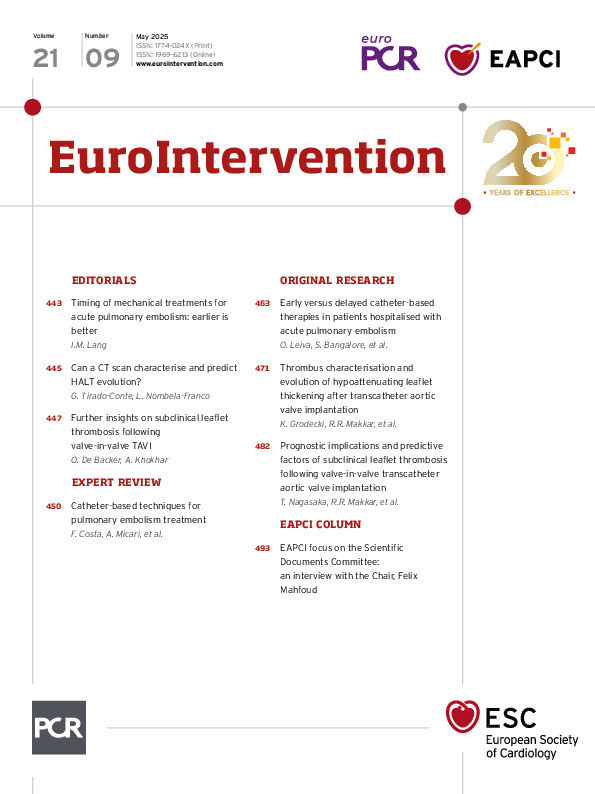With an expert review followed by a series of original research articles and illuminating editorials, we are sure this issue will keep you occupied as we count down to EuroPCR 2025!
Treating transcatheter pulmonary embolisms – an expert review
Catheter-directed therapies offer promising alternatives for selected pulmonary embolism patients. In this expert review, Francesco Costa, Antonio Micari, and colleagues provide an overview of available catheter-directed therapies for pulmonary embolisms, including discussions on optimal procedural planning, device selection, technical execution, evaluation of results, and complications management.
Early mechanical treatment of acute pulmonary embolisms
Orly Leiva, Sripal Bangalore, and colleagues examine how the timing of catheter-based therapies in patients hospitalised for intermediate- or high-risk pulmonary embolism impacts outcomes, including short-term mortality, readmission rates, and length of stay. Patients who received early catheter-based therapies (≤1 from admission) – compared to those who received delayed treatment (>1 day) – were associated with improved outcomes. This article is accompanied by an editorial by Irene M. Lang.
Hypoattenuated leaflet thickening: thrombus characterisation and evolution
The clinical value of computed tomography angiography is underlined in a study by Kajetan Grodecki, Raj R. Makkar, and colleagues, who performed quantitative assessment of hypoattenuated leaflet thickening (HALT) resolution in patients undergoing transcatheter aortic valve implantation (TAVI) at 1-year follow-up. The key factors were found to be thrombus attenuation and prosthesis deformation, which can further inform clinicians on thrombus evolution and anticoagulation strategies. Gabriela Tirado-Conte and Luis Nombela-Franco contribute an editorial on this article.
Leaflet thrombosis outcomes post-valve-in-valve TAVI
Using peri- and postprocedural computed tomography to detect HALT, Takashi Nagasaka, Raj R. Makkar, and colleagues investigate clinical outcomes after valve-in-valve TAVI with balloon-expandable valves, focusing on HALT and potential predictors of leaflet thrombosis. Stent frame underexpansion and a lack of anticoagulation therapy were identified as predictors of HALT and are further discussed in an editorial by Ole De Backer and Arif Khokhar.

